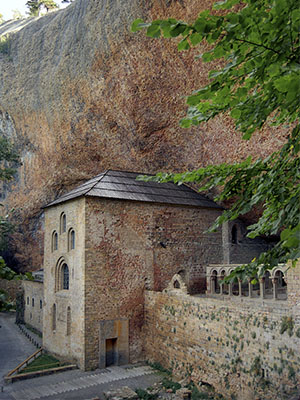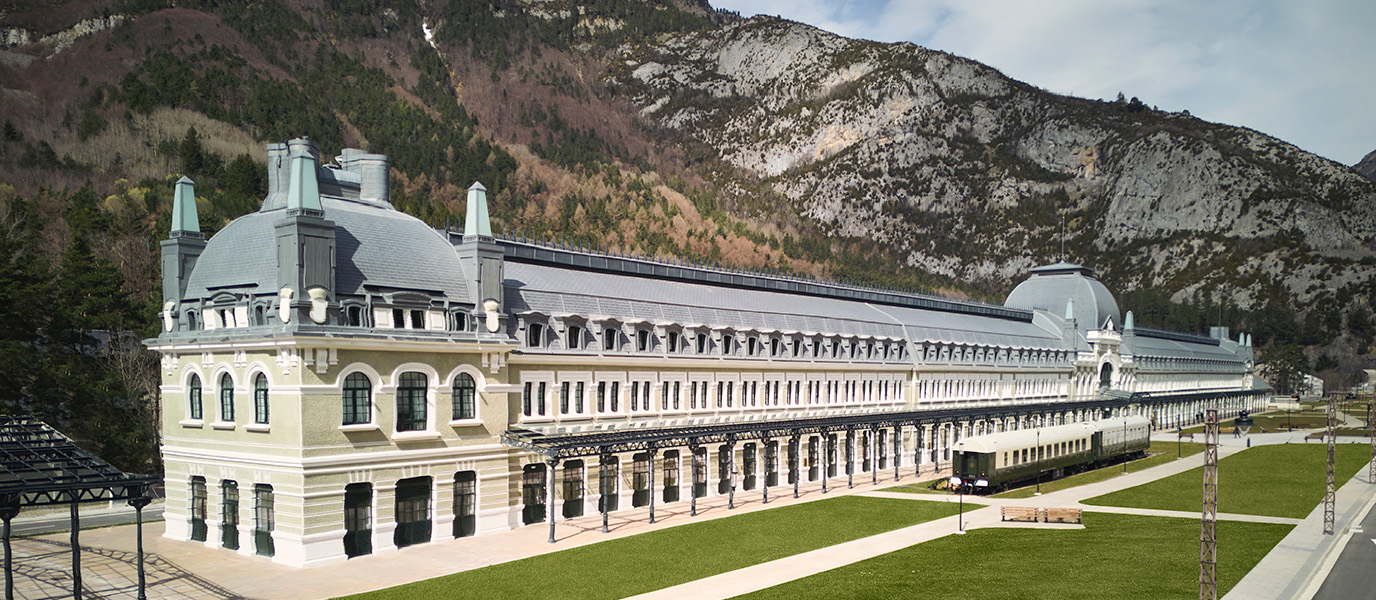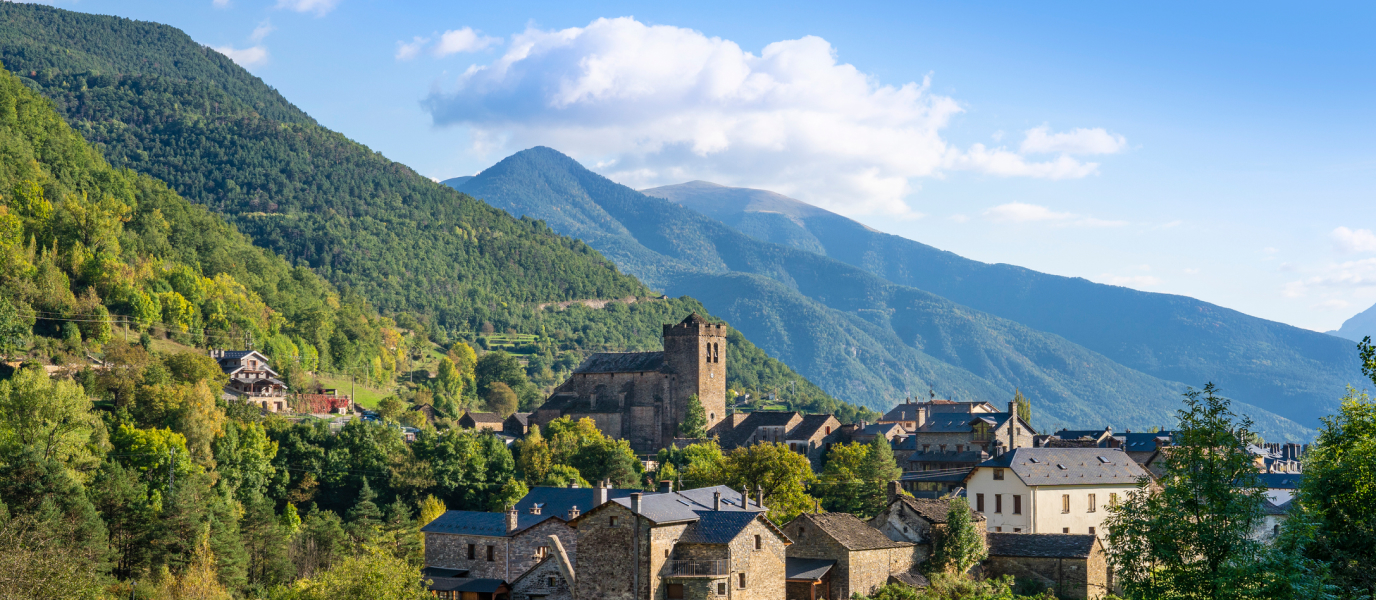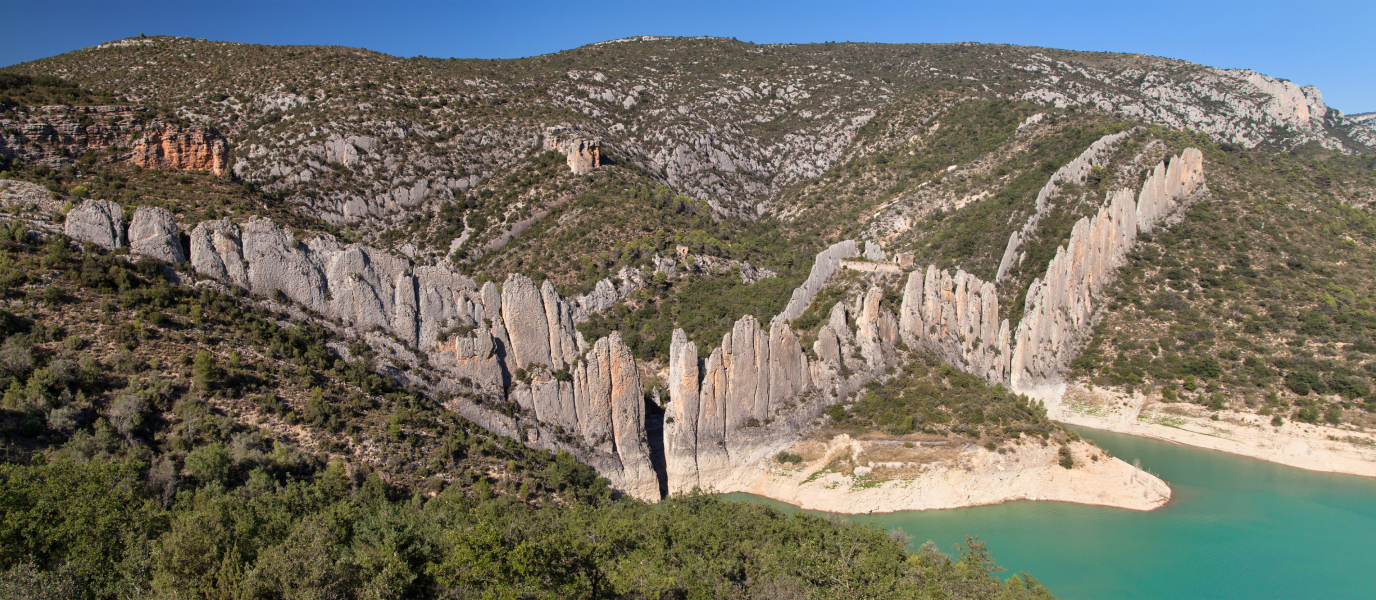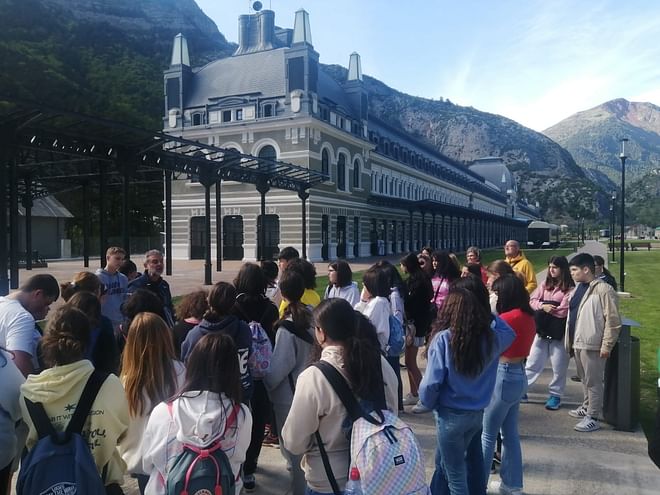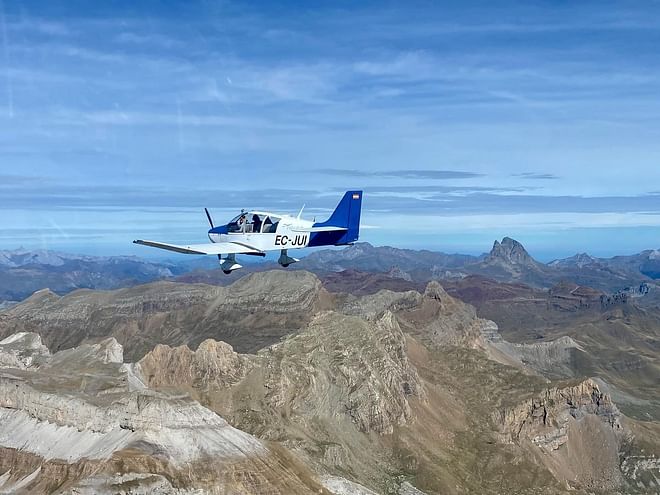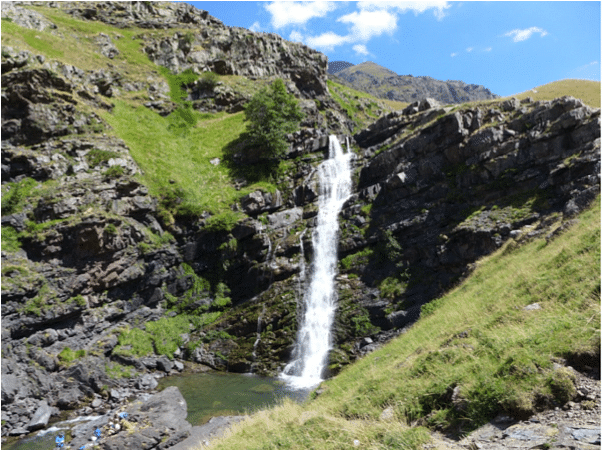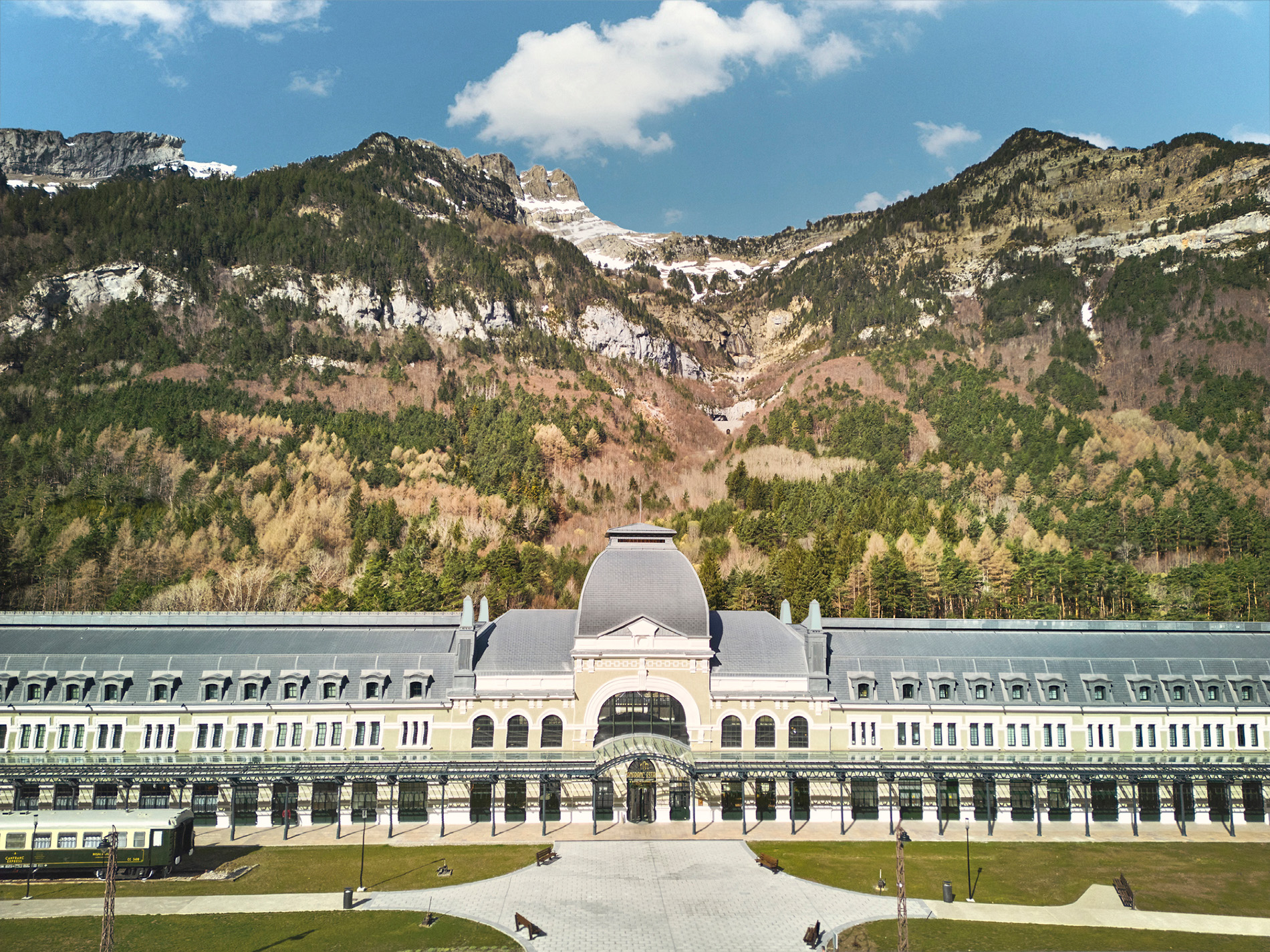This is a monastery nestling below a rock, a medieval icon and a royal vault. It makes up the Monastery of San Juan de la Peña, in Huesca, a landmark in the history of Aragón which radiates beauty. In this article we will tell you all you need to know about visiting San Juan de la Peña.
Its proximity to Jaca and a good part of the Aragonese Pyrenees, makes a visit to the monastery well worth it on a tour around this area of Aragon.
The monastery is part of the so-called Protected Landscape of San Juan de la Peña and Monte Oroel, a natural area of medium-altitude mountains in the Jacetania region. This area is characterised by its dense forestry, conglomerates of rocky formations, and by elements of religious heritage.
Peña Oroel is the most famous peak, partly due to its unusual outline. At 1,769 metres above sea level, it dominates the landscape above San Juan de la Peña and the town of Jaca. A popular hiking route leads to this natural area which also has several observation points overlooking the Pyrenees. The most outstanding of these is the Pyrenees Balcony and the San Voto Observation point.
The monastery of San Juan de la Peña is part of this enclave and is divided into two areas, the Old monastery and the New monastery, hardly a kilometre apart by road.
History of the Monastery of San Juan de la Peña
It all began with a legend, when in the eighth century a noble by the name of Voto and his brother Felix decided to become hermits in a cave where there was a chapel dedicated to St John the Baptist. There, along with a group of Christians, they proclaimed García Jiménez, count of Sobrarbe, king, thereby gaining continual favours which different counts and kings granted to what was then a small monastery.
Now under the initiative of Sancho the Great of Navarre (1004-1035) construction of the monastery began under the name of San Juan de la Peña, which was chosen to be the vault for the kings of Aragon in the reign of king Sancho Ramírez (1063-1094). The church was consecrated in the year 1094, while the famous monastery cloister was built a little later on in the twelfth century. The monastery thus became a favourite haunt of the Aragonese monarchs, who protected it and improved it over the years.
The presence of San Juan de la Peña on the Aragonese path of the Way of St. James [Camino de Santiago] would draw many of the faithful here. Another great milestone for the monastery was the introduction of the Roman liturgical rite at mass for the first time on the Iberian Peninsula on 22nd of March 1071. Up until then liturgy on mainland Spain had followed the Hispanic-Visigothic rite from the sixth century.
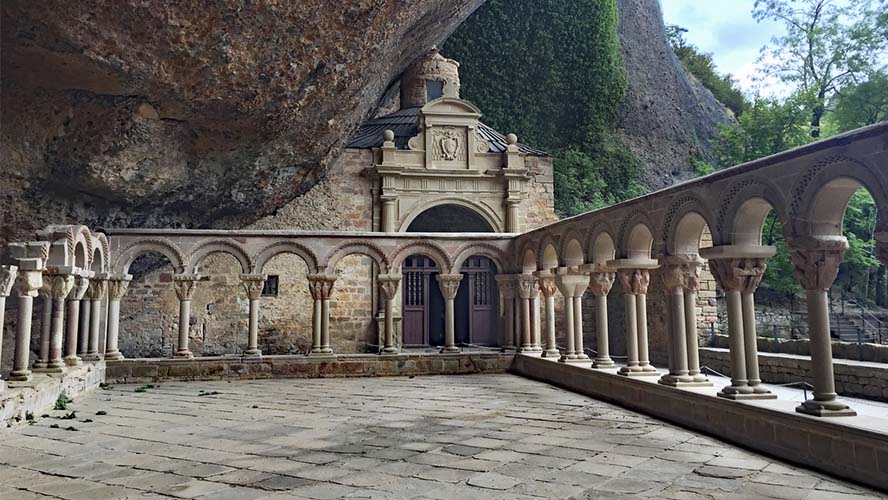
From the thirteenth century, the monastery of San Juan de la Peña went into decline. This was a result of law suits, debts and, above all, fires. The fire of 1675, in fact rendered the place uninhabitable and a new monastery was planned on the upper part of the rock where the old monastery was located on the Saint Indaletius meadow.
Another of the legends from San Juan de la Peña says that here lay the Holy Grail of Jesus Christ, from 1071 until 1399, when it was moved to Saragossa. This fact has never been proven.
Visiting San Juan de la Peña
To visit San Juan de la Peña one must bear in mind there are different types of ticket, according to the buildings you wish to visit: the Old monastery, the Visitors’ centre for the monastery and the Visitors’ Centre for the Kingdom of Aragon. A joint ticket can be purchased to visit all three buildings.
No doubt, the Old monastery, with a spectacular and unusual location under a large rock, is the star attraction. The complex is divided into two floors. On the upper floor, on the same level as the road, is the cloister, the church, the Royal Vault and other inner rooms of the temple.
In the Royal Vault are the tombs of some of the kings of Aragon and Navarre, which have been buried here for five centuries. Although it was built in the eleventh century, its final look dates from the Charles III era (1770), when bronzes, marble and medallions with war scenes were placed. Among the monarchs buried here are Ramiro I, Sancho Ramírez and Peter I.
On the lower floor of the monastery is the council room and the church for Saints Julian and Basilissa. The council room was a bedroom for the monks, although the current vaults date from the fifteenth century. It was also a place of burial. As this was the basement of the building, the rooms had arcades and pillars holding up the upper floor, so it has the feel of a crypt. The lower church is the Mozarabic temple from where the monastery originated and has some of the walls are bare rock It is truly a wonder.
The cloister
One of the main attractions in the monastery is the cloister, the most emblematic part of this Romanesque gem. This space, measuring 16 x 10 metres, was built in the twelfth century using stone from the nearby locality of Botaya. Its outstanding features are the capitals depicting fantasy animals, vegetables and some biblical scenes.
The cloister is in plain view between the rock itself which shelters it and the road. At this point there was a boundary wall which gave the cloister a more closed-off feel, between the upper church and the chapel of San Voto. Access to the cloister is by means of a beautiful Mozarabic horseshoe arch.
The upper church
The upper church is built on the Mozarabic church and the vault for the nave was hewn from the rock from the mountain itself. It was consecrated on the 4th of December 1094 in the reign of Peter I. This Romanesque church has three apses at its sanctuary decorated with the traditional chequered or Jaca squares. The space does not have outside windows as it is built into the rock.
The New Monastery
The great fire at the monastery which lasted three days in 1675 rendered the place entirely uninhabitable there, so the community decided to build a new monastery at a nearby site. The place chosen was the Saint Indaletius Plain, a meadow located on the upper part of the same rock where the Old monastery was built. The works lasted from 1693 to 1705.
Of special interest in the New Monastery is the Baroque facade with niches of St John the Baptist, St Indaletius and Saint Benedict. With the confiscation of church assets by Mendizábal in 1835, the building became public property, and in 1889 obtained the title of National Monument and in 1920 was declared a Site of National Heritage, due to the Royal Vault.
At present, the New Monastery contains a guesthouse and the visitor’s centre for the monastery and the Kingdom of Aragon.




































































